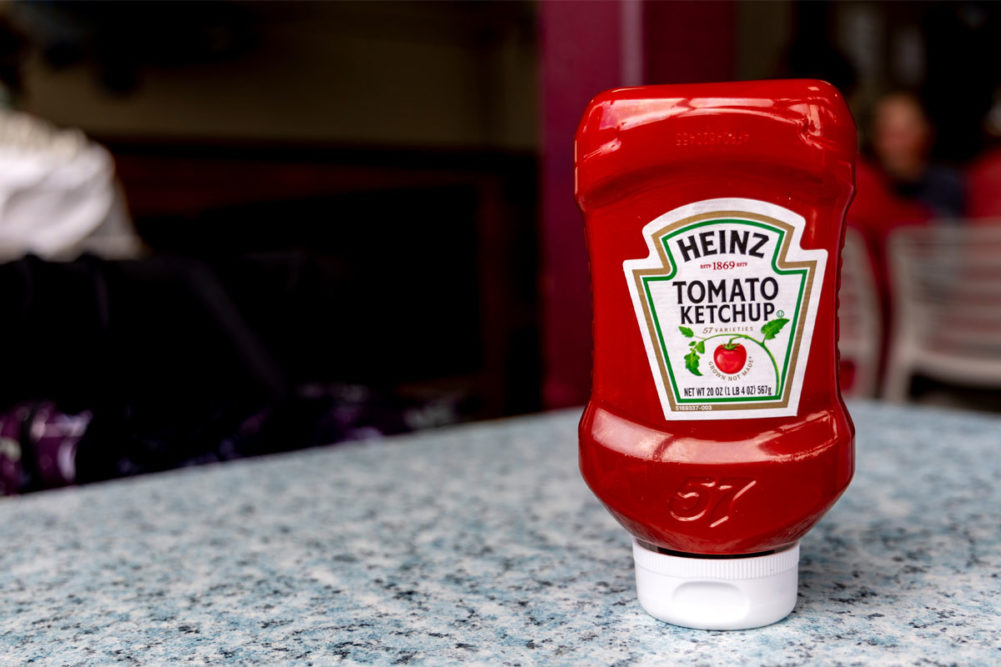CHICAGO — Investments in people, technology and now capacity are allowing the Kraft Heinz Co. to penetrate farther into the foodservice category. The channel is a strategic priority for management and expected to be a component of company-wide growth in fiscal 2023.
Foodservice sales in both North America and internationally make up approximately 14% of sales, according to the company.
“Kraft Heinz foodservice grew over 20% both in the year and in the fourth quarter, with strong performance across North America and international,” said Miguel Patricio, chairman and chief executive officer, in prepared remarks focused on fiscal 2022 results. “We gained share in both zones and significantly outpaced industry growth.”
What gives management optimism are the additional opportunities in the category.
“… We still are only in 25 of (the) top 50 QSR (chains) in the US,” said Carlos A. Abrams-Rivera, president of North America, during a Feb. 15 earnings call with securities analysts. “So, we know that everything that we're doing continues to be an opportunity for us to further drive growth.”
Consumer insights play a role as well, said Rafael de Olivera, president of international markets.
“Remember, many times, we compete with local players, but having this global insight makes a big difference for us to test innovation on market and successful scale up to additional markets,” he said. “And we've been building this model and replicating consistently across the globe and it's working really well.”
 A 50% increase in Dip & Squeeze manufacturing capacity will come online in May.
A 50% increase in Dip & Squeeze manufacturing capacity will come online in May. Source: ©WOLTERKE — STOCK.ADOBE.COM
In May, an additional 25% increase in US pouch manufacturing capacity and a 50% increase in Dip & Squeeze capacity will come online to support foodservice growth.
“Foodservice remains an attractive channel for us, and we are very encouraged by the growth we have seen,” Mr. Patricio said. “We are underpenetrated and we expect to continue to see strong results in 2023.”
Kraft Heinz Co. net income for the fiscal year ended Dec. 31, 2022, surged to $2.4 billion, equal to $1.93 per share on the common stock, and up from $1 billion, equal to 83¢ per share, the year before.
Items affecting profitability included debt extinguishment costs in the prior year period and lower non-cash impairment losses during the current year, according to the company.
Annual sales ticked up to $26.5 billion from $26 billion in 2021. Sales incurred an 8% impact from divestitures and acquisitions and a 2% impact from currency.
Organic sales increased 10% compared to the prior year. Price increases drove the organic sales growth with volume/mix falling 3% compared to the prior year.
Like many other food manufacturers, Kraft Heinz continues to struggle to improve service levels.
“Although the operating environment is getting better, we are not in the clear,” Mr. Patricio said. “The issues with upstream suppliers are stabilizing, but there are challenges that arise from time to time, more sporadic in nature, that we continue to address with agility.
“This is reflected in our case fill rate (CFR). Year-to-date through the third quarter, US CFR was just below 90%. In the fourth quarter, we continued to see small improvements each month, ending December at the highest level we have seen all year. But we are still not where we need to be, with a goal of getting back into the high 90’s.”
In North America, annual sales were flat at $20.3 billion. International sales rose 8% to $6.2 billion.
“As we have highlighted before, our portfolio of iconic brands is balanced, with our market share by consumer base not over-indexed to any one income level,” Mr. Patricio said. “We saw year-over-year market share improvements for all income levels relative to the beginning of the year. And in fact, the largest group of consumers of our products by income is growing the most, with a 13% increase in consumption in the fourth quarter.”






